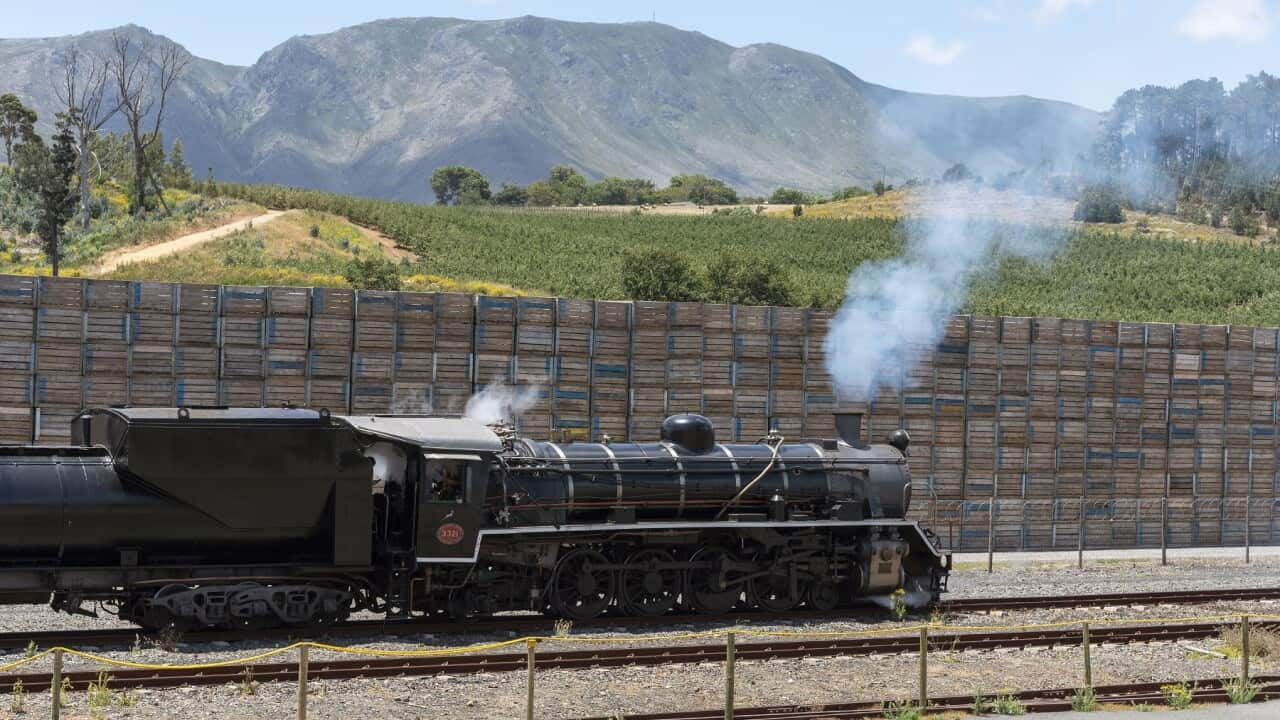TRANSCRIPT:
It's an early weekend morning in Cape Town - and these passengers are climbing aboard historic railway coaches, for a 161 kilometre round trip on the Ceres steam-powered train to Elgin.
Roger Orpen owns the Elgin Railway Market.
He says the reaction of children when they experience the train is priceless, especially since many have not seen a steam train in real life.
“The most exciting part about the train arriving is when the kids come to watch. The kids have never been up close next to a steam train, and they make one hell of a show of it - they blow their hooter, they blow lots of steam, and the kids come running out. And they actually get a bit of a fright when they realise how loud this diesel engine is - no, it’s not a diesel engine, it’s a steam engine!”
While it's a novelty for some, it's nostalgic for others.
Passenger Hans Luijk says travelling by steam train takes him back to the 1980s when the South African military were involved in a war in Angola.
"The last time that I was actually on a train was about 38 years ago when I was called up for military service. And it was a trip from Wingfield, close to Cape Town, to Grahamstown which is about a 900 kilometre trip. But obviously the feelings and the emotions were all mixed up. So this time it’s really a leisurely feeling and an adventurous feeling.”
Nostalgia is also what keeps 70-year old Johan Fourie coming.
Johan worked on the national railways from 1971 until his retirement in 2009, during which time he experienced the shift from steam to diesel.
He has been a steam train driver in the heritage sector since 2013.
“Steam stays in my blood. It remains my first love. I always tell my wife, this is my first wife. There’s nothing like a steam engine. It’s alive. I don’t know if you heard that we struggled going up the mountain. Slowly but surely we made it. That is alive! It’s not a diesel that is dead. This thing is alive - it talks to you.”
South Africa started using steam trains in the 1860s and the railway network played a significant role in the country’s industrialisation.
At the peak of steam in 1959, there were 3,300 steam locomotives in use in South Africa.
When steam stopped being used in 1992 there were 700 steam locomotives on the tracks.
Today there are about 20 in use, including the Ceres service.
Peter Rogers has run steam train tours in South Africa since the 1980s.
He says there are two main reasons steam trains were used significantly longer in South Africa than in other countries.
"Most traction was steam and that was due to the fact that we had abundant coal in the country, as well as during the sanctions period when we couldn’t get diesel fuel. And for that reason steam kept on until about 1980s when railways eventually decided to get rid of steam. The last steam operated on the Kimberley-De Aar line in about 1992."
Rock Botha is the Director of the Ceres Steam Train.
He says keeping steam train travel alive in the 21st century involves a number of challenges, including sometimes having to manufacture spare parts from scratch.
But he says it's worth it, given there is an enduring love for steam travel.
“There are more steam locomotives running in the country now than there were ten years ago. So it’s definitely grown and there’s been a revival in steam. And you can see people are interested in it. Wherever steam is running, steam is running full. People love it. People wave, people hoot. There’s just a joy around steam that you don’t find anywhere else.”













